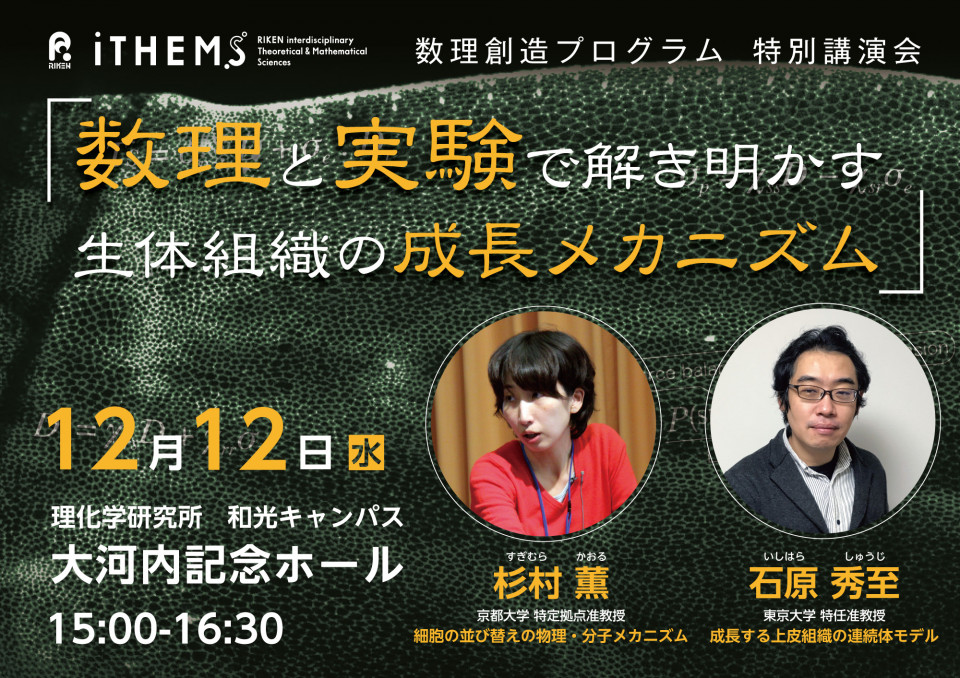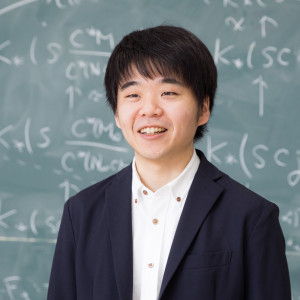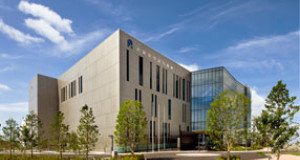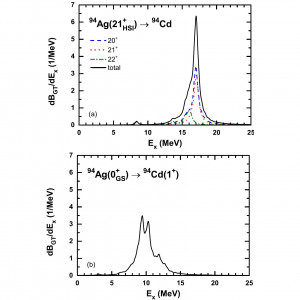Volume 30
Back to Newsletter List
Hot Topic
The Nobel Prize in Chemistry 2018
2018-11-12
This year’s Nobel Prize in Chemistry was awarded to Frances H Arnold for “the directed evolution of enzymes”, and jointly to George P Smith and Gregory P Winter for “the phage display of peptides and antibodies”. A major goal in chemistry is to develop new proteins, such as enzymes or antibodies. A protein is typically a string of hundreds or thousands of amino acids linked together that fold up in three-dimensional structures. Because there are 20 kinds of amino acids, the possible number of proteins (i.e. combination of amino acids) one can design is astronomical, and most of them don’t work. Both studies succeeded in developing a method to develop proteins based on a similar principle. Instead of trying to logically design a particular protein based on existing knowledge, they adopted the principle of evolution. Basically, first, they create several new proteins by introducing random mutations to existing proteins. Next, they select the best performing proteins and then introduce a new round of random mutations to create several new proteins. After a few cycles, a new protein that is much more effective than the original one can be obtained. This principle is the same as in the evolutionary or genetic algorithms used in machine learning. Who knows, maybe there are other problems the principle of evolution can be applied to!?!?
Upcoming Events
Workshop
iTHEMS-Kyushu WS - from particles and nuclei to cosmos -
November 21 (Wed) - 22 (Thu) 2018
Program:
Nov.21 (Wed)
13:00-13:05: T. Hatsuda (RIKEN) Introduction
13:05-13:50: T. Doi (RIKEN) Lattice QCD and Baryon Interactions
13:50-14:20: T. Hirakida (Kyushu) Persistent homology and confinement-deconfinement transition
14:20-14:50: H. Takaura(Kyushu)Strong coupling constant from inter-quark potential - OPE calculation without renormalon ambiguity -
14:50-15:20: Y. Yamaguchi (RIKEN) Short range pi J/psi-DDbar* potential
15:20-15:35: Coffee Break
15:35-16:20: Y. Hidaka (RIKEN) Nambu-Goldstone theorem and spontaneous symmetry breaking
16:20-16:50: T.M. Doi(RIKEN) PMS condition of optimized perturbation theory and anti-Stokes line
16:50-17:20: O. Morikawa(Kyushu)Numerical study of the N=2 Landau-Ginzburg model
17:20-17:50: M. Hongo (RIKEN) Effective field theory for dissipative systems
18:00-20:00: Banquet
Nov.22 (Thur)
9:30-10:15: H. Togashi (RIKEN) Equation of state for dense matter and astrophysical phenomena at high baryon density
10:15-10:45: S. Ogawa (Kyushu) Microscopic optical potentials with projectile breakup
10:45-11:00: Coffee Break
11:00-11:30: S. Furusawa (RIKEN) Supernovae and neutrinos
11:30-12:00: K. Takami (KCCT) Simulations of neutron-star mergers
Co-hosted by
Graduate School of Science, Kyushu Univ.
RIKEN iTHEMS
Organized by
Emiko Hiyama (Kyushu Univ. /RIKEN)
Hiroshi Suzuki (Kyushu Univ.)
Tetsuo Hatsuda (RIKEN iTHEMS)
Venue: Integrated Innovation Building (IIB), Kobe Campus, RIKEN
Event Official Language: Japanese
Seminar
Number Theory Seminar
Generating functions of CM & RM values
November 22 (Thu) 10:30 - 11:30, 2018
Toshiki Matsusaka (Kyushu University)
The special values of the elliptic modular j function j(z) at imaginary quadratic points are known as singular moduli (CM values), and play important roles in algebraic number theory. As a real quadratic analogue, Kaneko (2009) defined the `values’ of j(z) at real quadratic points (RM values). In 2011, Duke-Imamoglu-Toth showed that the generating function of the traces of these CM & RM values becomes a harmonic Maass form of weight 1/2. In this talk, I shall introduce a new class called polyharmonic weak Maass forms, inspired by works of Lagarias-Rhoades on the Kronecker limit formula, and give a generalization of Duke-Imamoglu-Toth’s work for any polyharmonic weak Maass form.
Venue: Seminar Room #160, 1F Main Research Building, RIKEN
Event Official Language: English
Seminar
Number Theory Seminar
On A_2-liftings of sum formulas and Bowman-Bradley type formulas for finite multiple zeta values
November 22 (Thu) 11:40 - 12:40, 2018
Shin-ichiro Seki (Tohoku University)
Both the sum formula and Bowman-Bradley's theorem for multiple zeta values are well known. Recently, Saito and Wakabayashi proved counterparts of these two formulas for A-finite multiple zeta values. In this talk, I will explain that A_2-liftings of some parts of Saito-Wakabayashi's results have simple forms using Seki-Bernoulli numbers. The first part of this talk is a joint work with Shuji Yamamoto. The second part is a joint work with Hideki Murahara and Tomokazu Onozuka.
Venue: Seminar Room #160, 1F Main Research Building, RIKEN
Event Official Language: English
Workshop
Supported by iTHEMS
Workshop on Recent Developments of Chiral Matter and Topology
December 6 (Thu) - 9 (Sun) 2018
The aim of this workshop is to gather researchers of high-energy and condensed-matter physics working on chiral Matter and Topology, to exchange ideas and establish collaborations to tackle unsolved issues and carry out future extensions. The workshop expects to welcome 40-60 participants who are interested in the aforementioned topics.
Organizers:
Tomoki Ozawa, Tetsuo Hatsuda (RIKEN iTHEMS)
Di-Lun Yang (RIKEN Nishina Center; YITP, Kyoto)
Chang-Tse Hsieh (Kavli IPMU / ISSP, the Univ. of Tokyo)
Jiunn-Wei Chen, Guang-Yu Guo (National Taiwan Univ.)
Hsiang-Nan Li (Academia Sinica)
Venue: National Taiwan University, Taipei, Taiwan
Event Official Language: English
Special Lecture
The physical and biological basis of tissue growth
December 12 (Wed) 15:00 - 16:30, 2018
Kaoru Sugimura (Program-Specific Research Center Associate Professor, Kyoto University)
Shuji Ishihara (Project Associate Professor, The University of Tokyo)
15:00 - 15:40 "Physical and molecular mechanism of cell rearrangement" Kaoru Sugimura
15:50 - 16:30 "From cells to tissue: A continuum model of epithelial tissue mechanics" Shuji Ishihara
Venue: Okochi Hall, 1F Laser Science Laboratory, RIKEN
Broadcast: R511, Computational Science Research Building, R-CCS, Kobe Campus, RIKEN / SUURI-COOL (Kyoto), Room 204-205, 2F Maskawa Building for Education and Research, North Campus, Kyoto University / SUURI-COOL (Sendai), Room 303, 3F AIMR Main Building, Advanced Institute for Materials Research (AIMR), Tohoku University
Event Official Language: Japanese
Math Lecture
Theory of Operator Algebras
Theory of Operator Algebras (6th)
December 20 (Thu) 15:30 - 17:00, 2018
Yosuke Kubota (Research Scientist, RIKEN Interdisciplinary Theoretical and Mathematical Sciences Program (iTHEMS))
Title: An introduction to operator algebras
Abstract: Operators are linear maps from a (usually an infinite dimensional) linear space (most frequently the Hilbert space) to itself, which is like matrices of infinite degree. Operators form an algebra by obvious addition and multiplication. Operators appear in most of the fields in mathematics, in algebra, in geometry, in analysis, ... Some of the key words at the beginning of these lectures are "spectral theory" "operator algebras" "Tomita-Takesaki theory". These lectures are for non-professional people.
Venue: Seminar Room #160, 1F Main Research Building, RIKEN
Event Official Language: Japanese
Conference
Co-hosted by iTHEMS
The 7th International Symposium on Data Assimilation (ISDA2019)
January 21 (Mon) - 24 (Thu) 2019
The symposium will focus on the cross-cutting issues shared in broad applications of data assimilation from geoscience to various physical and biological sciences. In particular, the symposium will enhance discussions among researchers with various background on, for example, non-Gaussian and nonlinear data assimilation problems, Big Data Assimilation (BDA), high-performance computation (HPC), Uncertainty Quantification (UQ), advanced intelligence (AI) and machine learning, multi-scale and multi-component treatments, observational issues, and mathematical problems.
Abstract Submission Deadline: October 14, 2018 at 11:59 p.m. UTC
Registration Deadline: December 16, 2018 at 11:59 p.m. UTC
Submission/Registration Fee: Free
Venue: 6F auditorium, Computational Science Research Building, R-CCS, Kobe Campus, RIKEN
Event Official Language: English
Featured Paper of the Week
Gamow-Teller transitions from high-spin isomers in $N=Z$ nuclei
2018-11-12
Atomic nuclei are composed of protons and neutrons. We may imagine like a certain number of (quantum) balls putting in a (self-bound) container. On the one hand, the nuclear magic numbers show the single-particle features of nuclei; On the other hand, the giant resonances show the emergent collective features. For example, an intuitive image of giant dipole resonance is: All protons form a group while all neutrons form another group, and these two groups oscillate against to each other collectively.
Gamow-Teller resonance is an important kind of giant resonances involving not only the spin but also the isospin degrees of freedom in nuclei. So far, most, if not all, of experimental and theoretical studies on this direction focus on the resonances from the nuclei being in their ground states, largely due to the experimental limitations. However, it is expected that, in the near future, our world-leading nuclear facility in RIKEN can generate high-quality radioactive beams with nuclei being in their high-spin isomeric states. Motived by this perspective, we predict that the Gamow-Teller transitions from the high-spin isomers could be much more collective than the corresponding transitions from their ground states, by taking nuclei 52Fe and 94Ag as examples. This would be one of the promising collaborations between theorists and experimentalists in RIKEN.
Reference:
H. Z. Liang, H. Sagawa, M. Sasano, T. Suzuki, M. Honma
"Gamow-Teller transitions from high-spin isomers in $N=Z$ nuclei"
Phys. Rev. C 98, 014311 (2018)
doi: 10.1103/PhysRevC.98.014311
arXiv: 1801.09076
If you would like to cancel your subscription or change your email address,
please let us know via our contact form.
Copyright © iTHEMS, RIKEN. All rights reserved.






